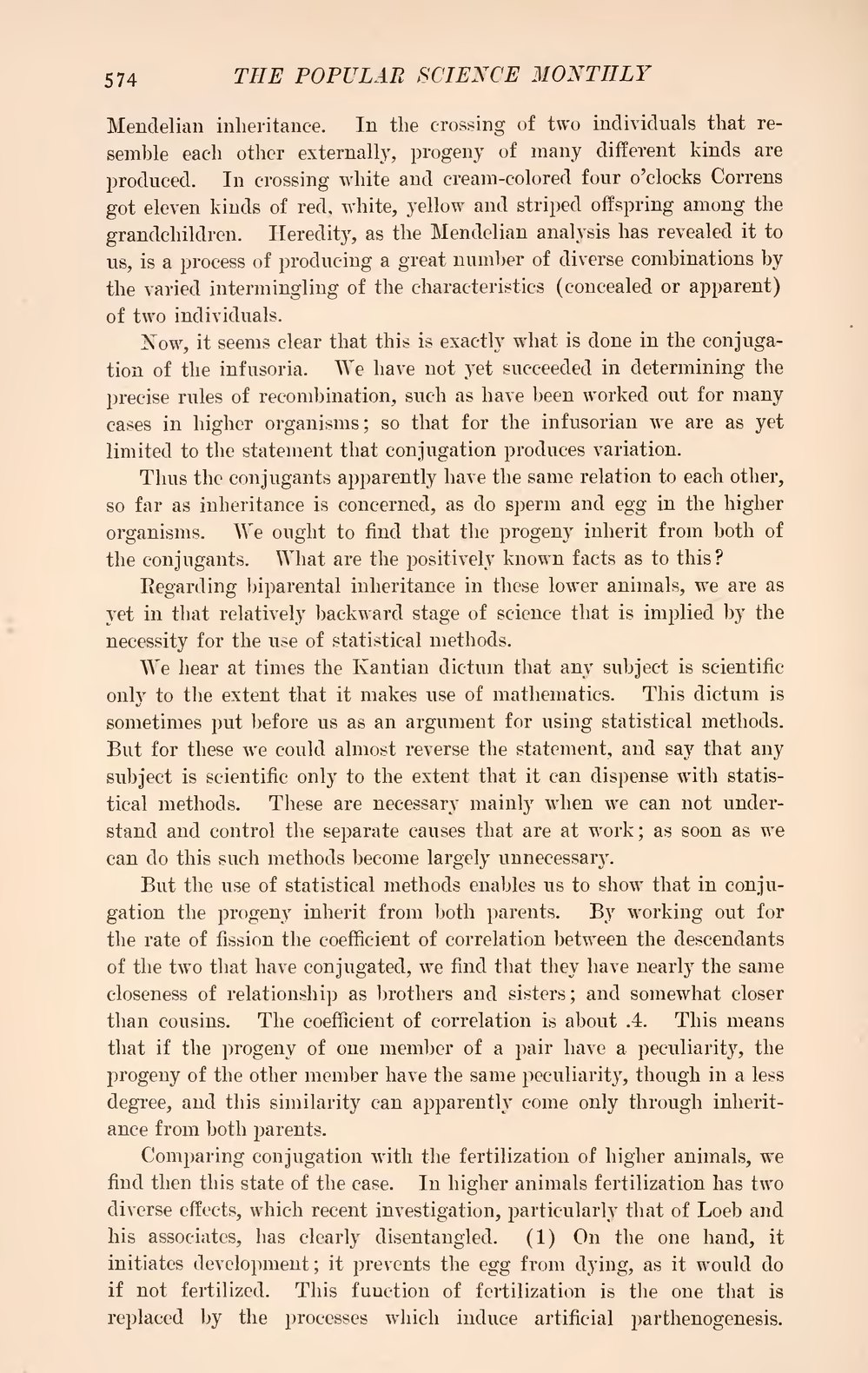Mendelian inheritance. In the crossing of two individuals that resemble each other externally, progeny of many different kinds are produced. In crossing white and cream-colored four o'clocks Correns got eleven kinds of red, white, yellow and striped offspring among the grandchildren. Heredity, as the Mendelian analysis has revealed it to us, is a process of producing a great number of diverse combinations by the varied intermingling of the characteristics (concealed or apparent) of two individuals.
Now, it seems clear that this is exactly what is done in the conjugation of the infusoria. We have not yet succeeded in determining the precise rules of recombination, such as have been worked out for many cases in higher organisms; so that for the infusorian we are as yet limited to the statement that conjugation produces variation.
Thus the conjugants apparently have the same relation to each other, so far as inheritance is concerned, as do sperm and egg in the higher organisms. We ought to find that the progeny inherit from both of the conjugants. What are the positively known facts as to this?
Regarding biparental inheritance in these lower animals, we are as yet in that relatively backward stage of science that is implied by the necessity for the use of statistical methods.
We hear at times the Kantian dictum that any subject is scientific only to the extent that it makes use of mathematics. This dictum is sometimes put before us as an argument for using statistical methods. But for these we could almost reverse the statement, and say that any subject is scientific only to the extent that it can dispense with statistical methods. These are necessary mainly when we can not understand and control the separate causes that are at work; as soon as we can do this such methods become largely unnecessary.
But the use of statistical methods enables us to show that in conjugation the progeny inherit from both parents. By working out for the rate of fission the coefficient of correlation between the descendants of the two that have conjugated, we find that they have nearly the same closeness of relationship as brothers and sisters; and somewhat closer than cousins. The coefficient of correlation is about .4. This means that if the progeny of one member of a pair have a peculiarity, the progeny of the other member have the same peculiarity, though in a less degree, and this similarity can apparently come only through inheritance from both parents.
Comparing conjugation with the fertilization of higher animals, we find then this state of the case. In higher animals fertilization has two diverse effects, which recent investigation, particularly that of Loeb and his associates, has clearly disentangled. (1) On the one hand, it initiates development; it prevents the egg from dying, as it would do if not fertilized. This function of fertilization is the one that is replaced by the processes which induce artificial parthenogenesis.
